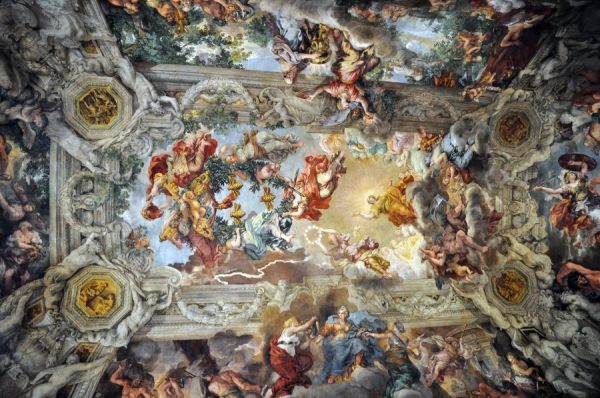Rome has more cultural resources than many cities twice its size, which is what makes managing and paying for them so difficult
Each month, as we compile the What’s On listings, it becomes increasingly obvious that Rome is finding it hard to get first-class exhibitions.
To be sure there has been the Frida Kahlo show at the Scuderie Papali this spring (Andy Devane’s review in the May edition). And there are small interesting exhibitions in the numerous contemporary art galleries in Rome (see the impressively long list of galleries in the July edition). Le Scuderie Papali still provide unfailingly good exhibitions and the Palazzo delle Esposizioni usually has a good programme.
But when was the last time that the Galleria Nazionale d’Arte Moderna (GNAM) had an exhibition that lived up to the reputation it built up under the legendary post-war director Palma Bucarelli? And what do the two magnificent new spaces for contemporary art, MACRO (Museo d’Arte Contemporanea Roma) and MAXXI (Museo Nazionale delle Arti del XXI Secolo) have on offer? When was the last time that there was a top-class exhibition in Rome, along the lines of those that open regularly in London, Paris or New York? The last real crowd-buster was the Caravaggio at the Scuderie Papali, but that was four years ago, followed by the much less popular Vermeer in 2012, also at the Scuderie.
Are the other performing arts doing better? Opera is up to standard if Riccardo Muti is conducting, but the programme is always safe and never adventurous. Classical music at the Auditorium Parco della Musica can rely on a good selection of international soloists throughout the season, and the S. Cecilia orchestra under Sir Antonio Pappano keeps the standard high. Dance holds its own at the Teatro Olimpico and the annual international dance festival in February at the Auditorium is a serious project to promote new talent. Live music is better than it once was, and although there has been much muttering about the Rolling Stones concert in June it was, nevertheless, a world-class event. However the summer festivals have shrunk again this year – and the money, such as it was for the Estate Romana – came too late to save much of the programme. The Rome Film Festival, to be held from 16-25 October instead of in November, has also been reduced this year.
But should we really complain? What other city of the same size and the same financial resources has so much to offer? The choice of museums alone is vast, from the Etruscan (Villa Giulia) to the ultra-contemporary MAXXI. In the last decade alone, Rome has gained two (well, three) major new spaces, all three beautifully carved out of disused venues; the two MACRO locations – one near Porta Pia and the other in Testaccio near the Tiber – and the Zaha Hadid-designed MAXXI. But both museums have their problems. The far-apart locations of MACRO’s two spaces are a management headache and a visitors’ nightmare, and the museum has been without a director for months. It has now lost one of its major sponsors – the electricity utility ENEL – and so far is without funding from the city for next year and its employees are haemorrhaging away. MAXXI, now under the guidance of the one-time minister of culture Giovanna Melandri, is still struggling to define its XXIst century role.
Another relatively new space, the Centrale Montemartini complex in Ostiense, also hit the headlines recently: La Repubblica columnist, Francesco Merlo, revealed that this annex of the Capitoline Museums only sells five tickets a day. He should not have been surprised by the figures. Montemartini – where Roman sculpture from the Capitoline Museums collection poses among huge 19th-century machines that once generated electricity – is way off the tourist beat and is a hike on public transport from the centre of town.
Merlo, whose article raised a hornet’s nest of controversy about the lack of cultural direction in Rome, was closer to the mark when he pointed out that the small and excellent Barracco museum, between Piazza Navona and Campo de’ Fiori, with its Egyptian collection, is often empty. Even worse, few visitors go to the huge Palazzo Barberini to see Caravaggio’s masterpieces Giuditta e Oloferne and Narciso, Raphael’s Fornarina, Hans Holbein’s Henry VIII, as well as works by Titian, Filippo Lippi, Pietro Da Cortona and El Greco. Visit the Villa Farnesina in Trastevere and you will see a series of Raphael’s frescoes as good as anything in the Vatican Museums, and without the crowds. Only about 200 people visit there each day, compared with some 13,000 in the Vatican.
Merlo and others look back with nostalgia to the days of Rome’s visionary cultural councillor, Renato Nicolini, or to the personal drive and determination of Walter Veltroni, one-time deputy premier and minister of culture and then mayor of Rome. Right now the city has no such person and the present mayor, Ignazio Marino, a transplant surgeon by training, is having difficulty finding someone to head his cultural department.
But the real problem is much bigger than one person. Rome, with a far greater choice of magnificent works of art than much larger cities, has far less money, a dearth of top-class managers and no single policy to unite so vast a range of attractions. The state museums (such as GNAM and MAXXI) vie with those of the city (Capitoline Museums) and with the archaeological sites such as the Colosseum and the Roman Forum. They also compete with the private collections (Doria Pamphilj, Colonna and others). Hanging over them all, like some star celebrity, are the Vatican Museums and the Sistine Chapel, followed far behind by the two other crowd-pullers in Rome, Villa Borghese and the Capitoline Museums.
The minister for culture, Dario Franceschini thinks that the solution is to encourage more private donors, as does Rome’s mayor Marino. Franceschini has also announced that more people should pay to get into museums – for example pensioners, who used to get in free until this summer. Other solutions that have been suggested are more tax breaks and fewer bureaucratic obstacles for private sponsors. But there is also a chronic lack of good top managers. With the 1960s generation now retiring, it is no secret that it is increasingly difficult to fill the top slots at the ministry of culture.
It will take a while to find the right solution. But in the short term there are two interesting exhibitions coming up; Memling e Italia at Le Scuderie and Gerhard Richter at Palaexpo, both in October. And contrary to incorrect information in Merlo’s gloomy article in La Repubblica, the Romaeuropa foundation has announced that its excellent multi-disciplinary festival will be back this autumn, from 24 September to 30 November. For more about the programme see www.romaeuropa.net.
Mary Wilsey


























